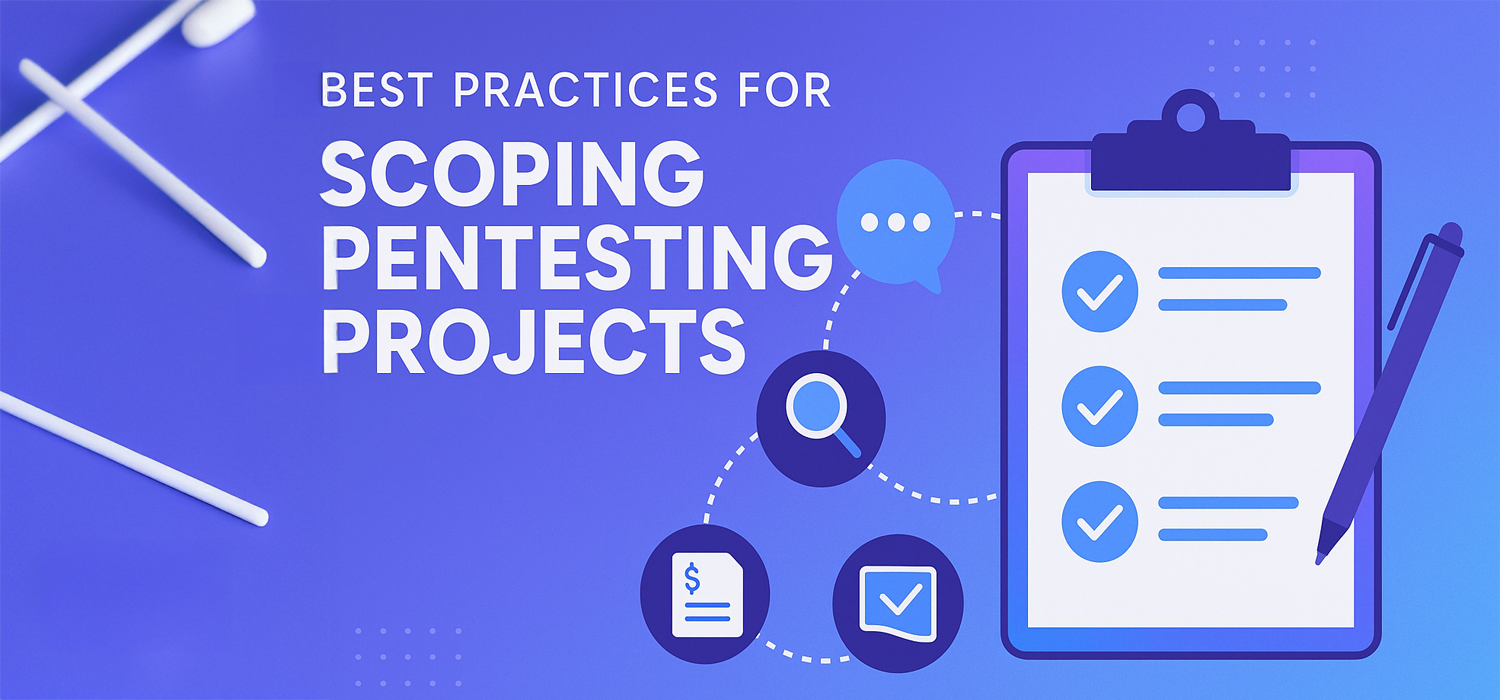The Four Phases of Successful Pentest Scoping and How to Master Them
Scoping is one of the most critical parts of a penetration testing project. Get it right, and your project runs smoothly with clear expectations and confident delivery. Get it wrong, and you risk misunderstandings, missed tasks, or wasted effort. Over the years, I’ve seen that most challenges in pentesting projects can be traced back to weak scoping practices. With the right approach—and the right tools—you can make scoping both precise and efficient. This is exactly where Pentahub focuses: helping you structure, automate, and elevate your scoping process.
We can divide the scoping process into four essential phases. Let’s walk through each of them and see how they can be optimized:
1. Information Gathering
Every project starts with understanding the client’s needs. Listening carefully and documenting requirements accurately ensures alignment from the beginning. A scoping questionnaire is a powerful way to standardize this step. With Pentahub’s digital scoping questionnaire, you can quickly capture all relevant details while guiding clients through the process in a structured way.
2. Level of Effort Assessment
Once requirements are clear, the next step is calculating the Level of Effort (LoE). This means translating project details into concrete hours and resources. Many teams use custom formulas that dynamically adapt to project variables—for example, assigning different amounts of time depending on the number or complexity of APIs. With Pentahub, these calculations become consistent, transparent, and adaptable, ensuring that your team’s estimates remain accurate across all projects.
3. Proposal Creation
With LoE in hand, you’re ready to prepare the client proposal or offer. Ideally, this step should be automated—pulling data directly from the scope and LoE to populate proposal templates. Pentahub integrates this seamlessly, reducing repetitive work and ensuring that proposals are not only fast to generate but also consistent in quality. Just like with reporting, having a connected system for proposals streamlines your workflow significantly.
4. Client Follow-Up
The final phase is proactive follow-up. Even after sending the proposal, you should stay engaged with the client—checking if they have additional questions, clarifications, or if they’re ready to proceed. Structured follow-up ensures projects don’t fall through the cracks and reinforces trust. Pentahub helps you track where each project stands so that no opportunity is lost.
By approaching scoping as a structured four-phase process, you can transform what is often seen as a bottleneck into a powerful enabler of success. With the right system in place, scoping becomes faster, more accurate, and a strong foundation for every pentest project. This is exactly why we built Pentahub—to turn scoping into a strategic advantage for your team.
Want to see it in action? Get access to our demo environment or schedule an advisory workshop with us today.
